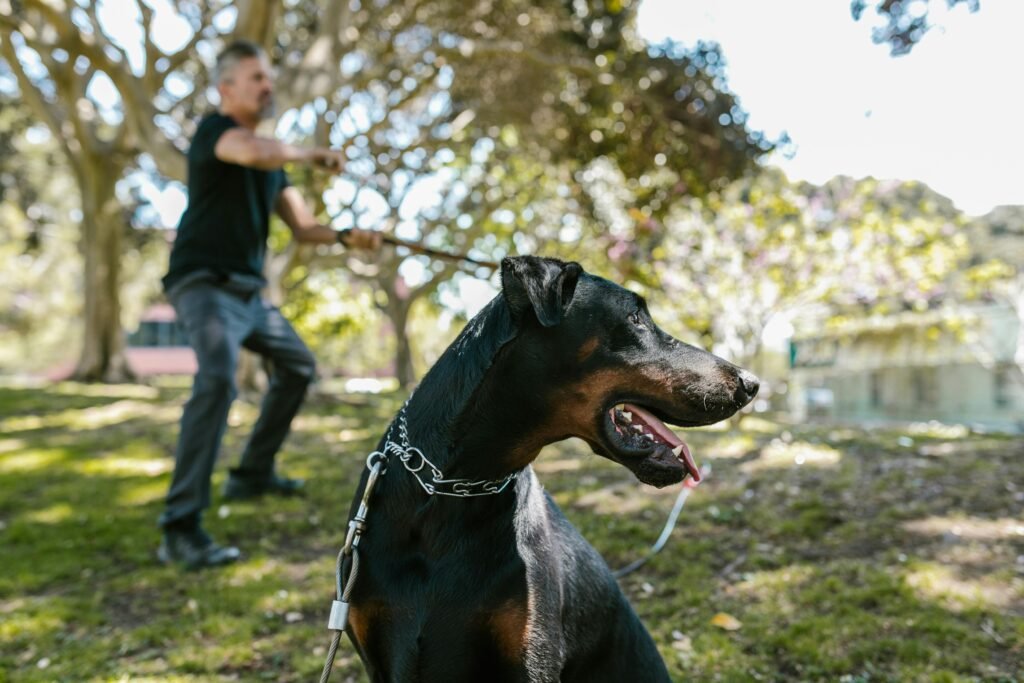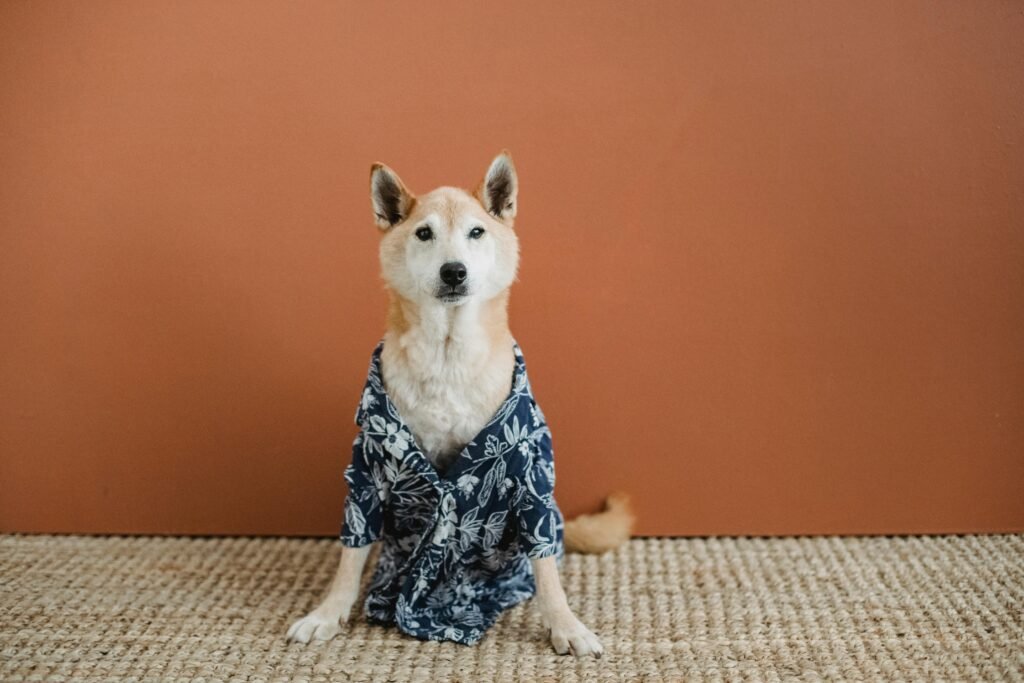When you picture a Doberman Pinscher, what comes to mind? A sleek, muscular guardian with a reputation for fierceness? While that’s not entirely wrong, there’s so much more to this dynamic breed. Let’s peel back the stereotypes and dive into what makes the Doberman a beloved companion, a devoted protector, and a fascinating study in canine intelligence.
Table of Contents
Doberman Pinscher: Beyond the Stereotypes
The Doberman Pinscher dog breed has a history as bold as its personality. Created in 1890s Germany by a tax collector named Louis Dobermann (yes, that’s where the name comes from!), these dogs were bred to be fearless protectors. Dobermann needed a loyal partner to accompany him through risky territories, and he succeeded—big time. While the exact mix of breeds used is debated, experts believe the Rottweiler, German Pinscher, and Greyhound played key roles (Britannica).
Today, the Doberman is celebrated not just as a guard dog but as a versatile working breed. From police K-9 units to therapy dogs, their adaptability shines. But what really sets them apart? Let’s explore.
Doberman Personality: More Than Just a Guard Dog
If you’re worried that a Doberman temperament is all brawn and no heart, think again. These dogs are deeply loyal to their families and thrive on human connection. They’re known to shadow their owners around the house, earning them the nickname “Velcro dogs.” But don’t mistake their clinginess for neediness—it’s pure devotion.
That said, their protective instincts are real. A well-socialized Doberman can distinguish between a friendly visitor and a threat, but early training is non-negotiable. Without proper socialization, their wariness of strangers can tip into overprotectiveness (American Kennel Club).
Doberman Temperament: Loyalty Meets Intelligence

The Doberman personality is a blend of sharp intelligence and unwavering loyalty. Ranked as the 5th smartest dog breed by canine psychologist Stanley Coren, they excel in obedience training and problem-solving. But this intelligence comes with a caveat: they get bored easily. Puzzle toys, agility courses, and advanced training keep their minds engaged.
Their temperament also leans toward sensitivity. Harsh training methods backfire with this breed—positive reinforcement is key. Reward their good behavior with treats or playtime, and you’ll have a disciplined, eager-to-please partner.
Raising a Doberman Puppy: What to Expect
Bringing home a Doberman puppy is like adopting a tiny athlete with a PhD in mischief. These pups are energetic, curious, and fast. Crate training and bite inhibition are critical from day one.
Socialization is equally important. Introduce your puppy to diverse environments, people, and other pets before they hit 16 weeks. This window is prime time for shaping their confidence and reducing fear-based behaviors later on.
Pro tip: Doberman puppies grow rapidly. A Doberman weight chart shows they can gain 10 pounds per month in their first year! Feed them high-quality, large-breed puppy food to support joint health.
Doberman Size and Appearance: Elegance in Motion
Let’s talk stats. A full-grown Doberman size ranges from 24–28 inches in height and 60–100 pounds in weight, with males typically larger than females. Their lean, muscular build gives them a regal yet athletic presence.
Their coat is another standout feature. While the classic black-and-rust is iconic, Doberman brown dog variations (officially called “red”) and even rare blue or fawn coats exist. The brown Doberman Pinscher sports a rich mahogany hue with rust markings, while the controversial white Doberman dog (resulting from albinism) often faces health challenges like light sensitivity.
Doberman Lifespan and Health: What Every Owner Should Know
The Doberman lifespan averages 10–12 years, but genetics and care play huge roles. Common health issues include:
- Dilated cardiomyopathy (DCM): A heart condition affecting nearly 60% of the breed (WebMD).
- Hip dysplasia: A joint issue manageable with diet and exercise.
- Von Willebrand’s disease: A clotting disorder.
Regular vet check-ups and screenings (like annual echocardiograms) are crucial. Opt for breeders who test for these conditions to boost your pup’s Doberman age expectancy.
The Rare White Doberman: Beauty or Health Risk?
The white Doberman dog is striking but controversial. Caused by a recessive gene linked to albinism, these dogs often suffer from vision problems, skin cancer, and light sensitivity. Reputable breeders avoid producing white Dobermans due to ethical concerns. If you’re smitten by their looks, consider adoption—but be prepared for higher vet bills.
Breeding Dobermans: Ethics and Considerations
Breeding Doberman dogs responsibly means prioritizing health over aesthetics. Look for breeders who:
- Test for DCM, hip dysplasia, and genetic disorders.
- Avoid breeding for extreme traits (like oversized heads).
- Focus on temperament to preserve the breed’s balanced nature.
The Doberman Pinscher dog breed deserves advocates who put their well-being first. Always ask for health clearances and meet the parent dogs to gauge their behavior.
Doberman vs. German Shepherd: Which Breed is Right for You?
Considering a Doberman? You might also be eyeing German Shepherds. Let’s compare:
Doberman Pinscher vs German Shepherd
| Trait | Doberman Pinscher | German Shepherd |
|---|---|---|
| Size | 24–28 inches, 60–100 lbs | 22–26 inches, 50–90 lbs |
| Temperament | Loyal, alert, reserved with strangers | Loyal, confident, highly trainable |
| Exercise Needs | 60+ minutes of vigorous activity/day | 60–90 minutes/day |
| Lifespan | 10–12 years | 9–13 years |
| Best For | Active families, guard roles | Families, police/military work |
Both breeds need dedicated training and thrive in active homes. Dobermans are slightly more reserved, while German Shepherds are often more adaptable to new people.
Final Thoughts: Is a Doberman the Right Dog for You?

The Doberman Pinscher isn’t for everyone—they demand time, consistency, and plenty of exercise. But for the right owner, they’re unmatched in loyalty and versatility. If you’re ready to invest in training, socialization, and lots of playtime, a Doberman will reward you with a lifetime of devotion.
FAQ
1. Are Dobermans aggressive by nature?
No, Doberman temperament is not inherently aggressive. They’re loyal and protective, but their behavior depends heavily on training, socialization, and environment. Poorly socialized Dobermans can become overly defensive, but with proper guidance, they’re calm and discerning companions. The American Kennel Club notes their intelligence makes them highly trainable for families.
2. How can I maximize my Doberman’s lifespan?
To support your Doberman age expectancy (10–12 years), prioritize regular vet check-ups, a high-protein diet, and daily exercise. Screen for breed-specific issues like dilated cardiomyopathy (DCM) and hip dysplasia. Early detection of health problems, as recommended by Hill’s Pet, can add years to their life.
3. Are white Dobermans unhealthy?
Yes, white Doberman dogs (albino) face significant health risks, including skin cancer, vision issues, and light sensitivity. Reputable breeders avoid producing them due to ethical concerns. If you encounter one, ensure they’re adopted, not purchased, and prepare for potential medical needs.
4. How much exercise does a Doberman need daily?
A Doberman dog requires at least 60–90 minutes of vigorous exercise daily. Think runs, agility training, or interactive play. Without it, they may develop destructive habits.
5. Is a Doberman or German Shepherd better for families?
Both breeds excel with active families, but Doberman personality leans toward being more reserved with strangers, while German Shepherds are often more outgoing. Dobermans need firm, consistent training but form intensely loyal bonds. For households with kids, early socialization is key for either breed.



